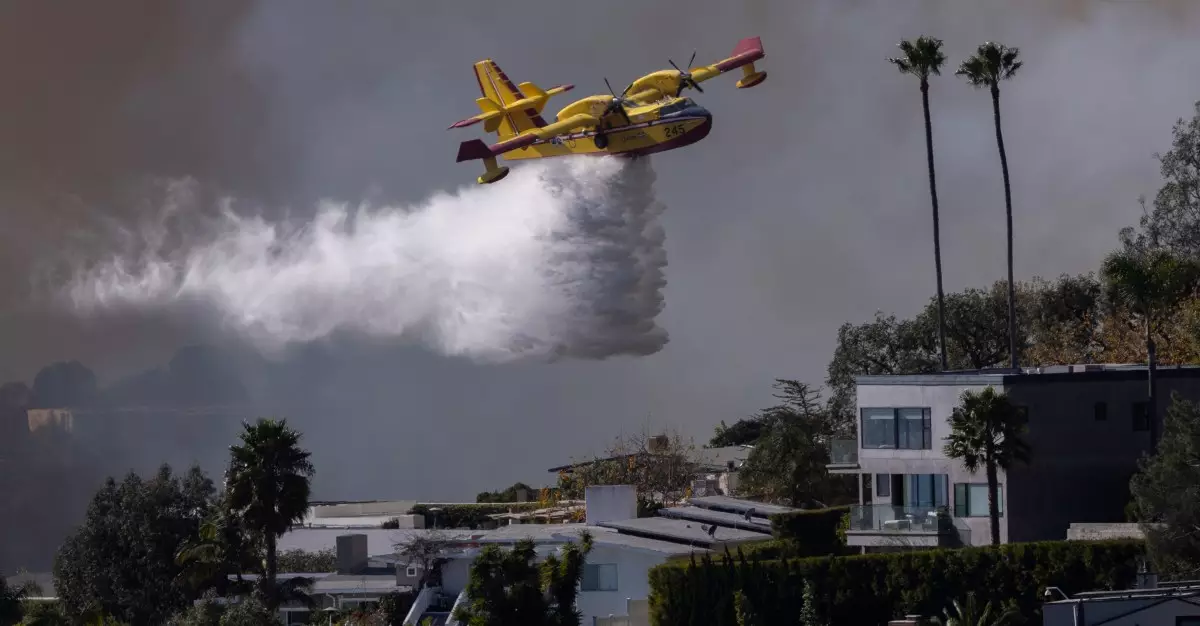In a recent legal case, Peter Akemann, a former high-ranking tech executive, found himself amid a storm of scrutiny after a close encounter between his drone and a firefighting aircraft. On January 9, 2025, Akemann flew his DJI Mini 3 Pro drone into the operational airspace of a Super Scooper plane battling the Palisades wildfires in Los Angeles, resulting in a costly accident that repaired an extensive hole in the plane’s wing. As investigations uncovered the extent of his transgression—flying well beyond the legal visual line of sight and into a Temporary Flight Restriction zone—Akemann has agreed to plead guilty, which may spare him from a year in prison but still entails significant financial and social penalties.
The plea deal proposed will have Akemann paying approximately $65,000 for damages and fulfilling 150 hours of community service aimed at wildfire relief, illustrating a blend of financial accountability and societal reparation. However, should the court reject this plea agreement, he could face a year-long jail sentence and heavy fines, a stark reminder of the legal ramifications tied to drone operation violations. Such cases emphasize the importance of understanding aviation laws and the potential consequences of negligence.
Drone technology has surged in popularity over the past decade, with applications spanning photography, agriculture, and notably, emergency response operations. However, the case involving Akemann sheds light on the vulnerabilities existing within both operator judgment and technology. Even as drones are increasingly sophisticated, they are not fail-proof, as illustrated by Akemann’s reliance on the DJI drone’s geo-fencing safeguards—features that are designed to prevent drones from entering restricted airspaces.
This incident raises critical questions about the balance between technological reliance and human oversight. Although geo-fencing technology aims to enforce operational boundaries, it becomes ineffective if users do not regularly update the system to reflect the most current flight restrictions. The recent decision by DJI to relax some of its geo-fencing capabilities has further complicated the landscape. As drones become increasingly accessible to the general public, the responsibilities and awareness required from users must keep pace.
Akemann’s case is illustrative of a larger debate regarding accountability in technology use and regulation. The intersection of innovation and responsibility is a terrain fraught with ethical dilemmas. While it is clear that Akemann made a mistake, one must ask: To what degree should technology companies be held responsible for user negligence due to their product vulnerabilities? The erosion of barriers created by geo-fencing means users could inadvertently find themselves in unsafe situations—questions arise regarding the adequacy of current regulatory measures.
Advocates for stricter regulations argue that new laws are essential to set clear boundaries and educational requirements for drone operators. The FAA has already imposed regulations concerning drone flights near wildfires, but as technology evolves rapidly, so do the risks associated with its use. Developing a comprehensive educational framework that goes beyond the basics of operating the device to include awareness of legal implications and safety protocols is paramount.
The Need for Enhanced Regulatory Measures
As stories like Akemann’s unfold, calls for more robust regulatory systems become increasingly loud. Enhanced regulations could mandate stricter licensing requirements, comprehensive training, and enforceable penalties for violations. Organizations working in wildfire management or emergency services could also benefit from collaborative efforts with drone manufacturers to ensure the technology remains compliant with operational standards in sensitive areas.
Regulation can only go so far, however. Both manufacturers and operators must cultivate a culture of responsibility. The conversation surrounding drone use needs to evolve into one that emphasizes ethical operation—to ensure that individuals fully grasp the gravity of their actions when they take to the skies.
Ultimately, the incident involving Peter Akemann serves as a cautionary tale that intertwines the realms of technology, personal accountability, and legal governance. As drone technology continues to permeate various aspects of everyday life, striking a balance between innovation and safety must remain at the forefront. This case should inspire both operators and manufacturers to reflect critically on their responsibilities as drone usage increases in complexity and accessibility. A collaborative effort towards education, regulation, and ethical considerations can help mitigate risks and promote a safer environment for all.

